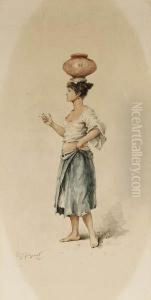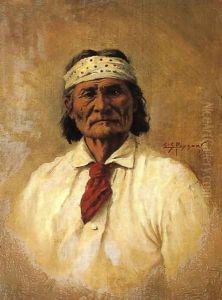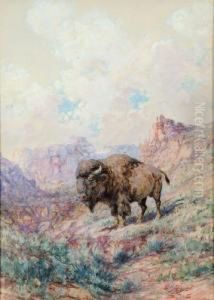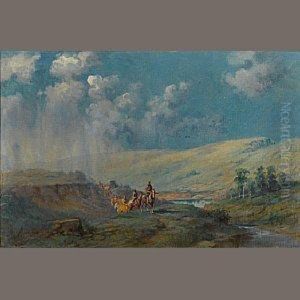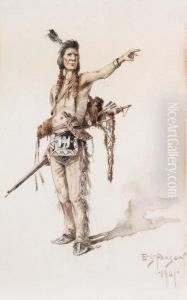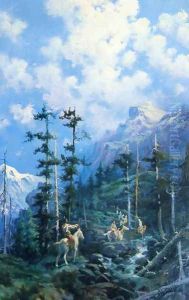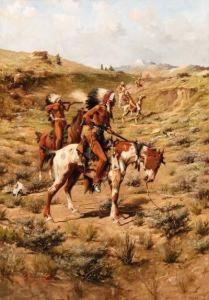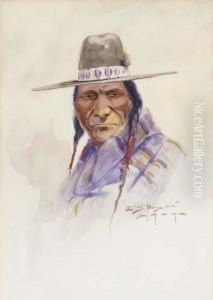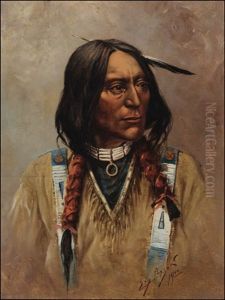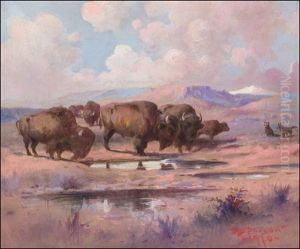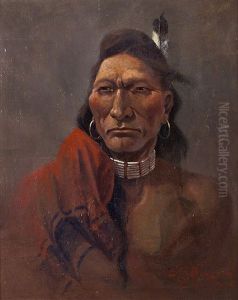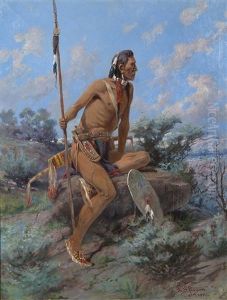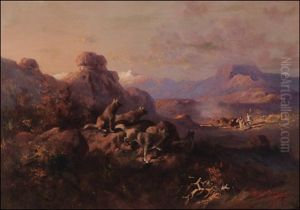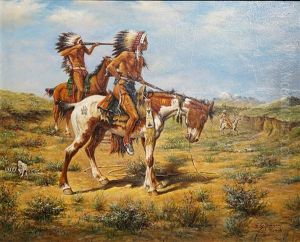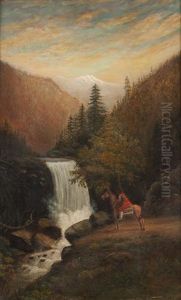Edgar Samuel Paxson Paintings
Edgar Samuel Paxson was an American frontier painter, scout, and writer, known for his works that depicted the American West. Born on April 25, 1852, in East Hamburg, now Orchard Park, New York, Paxson developed an early interest in art. He moved to Montana in 1877, which at the time was still a frontier, and it was here that he found his artistic inspiration in the landscapes and history of the West.
Paxson settled in Deer Lodge, Montana, and began his career painting portraits and scenes of Western life. He became deeply interested in Native American culture and the events of the American frontier, which would become central themes in his work. He was particularly fascinated by the Battle of the Little Bighorn and spent years researching the event, interviewing participants, and visiting the battlefield to ensure the accuracy of his most famous painting, 'Custer's Last Stand' (1899).
Throughout his career, Paxson continued to paint prolifically, capturing the fading frontier and the final chapters of the Plains Indian Wars. His detailed and vivid paintings contributed to the romanticized image of the West during the late 19th and early 20th centuries. Paxson's work includes other notable pieces such as 'Lewis and Clark at Three Forks' and a series of murals in the Missoula County Courthouse depicting significant events in Montana history.
Paxson was not only a painter but also a storyteller and a historian. He wrote articles and gave lectures about Western history, helping to preserve the stories and legends of that era. Edgar S. Paxson died on November 9, 1919, in Missoula, Montana. His works remain an important part of the cultural heritage of the American West and are exhibited in museums and collections across the United States.





